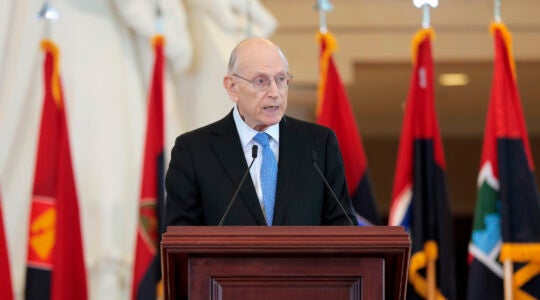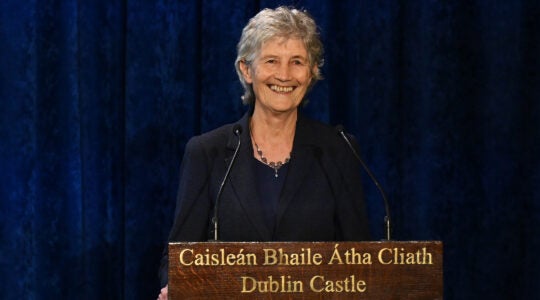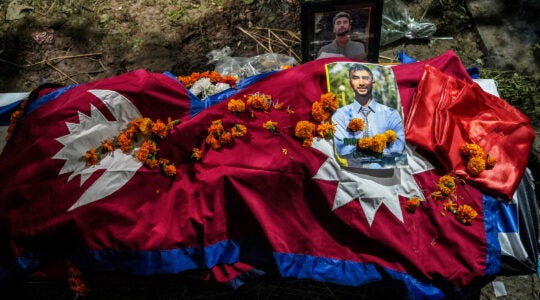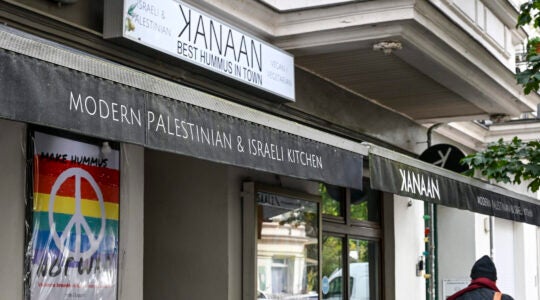CAPE TOWN (JTA) – Marlene Abitz can barely hold back the tears when she looks around her synagogue in Cape Town, particularly during the High Holy Days.
Pews that once were filled with her children are empty, and it’s getting harder and harder for Abitz, 57, to go see them in Australia.
“We don’t have family here” anymore, she laments.
Abitz considers herself among the luckier ones. At least her children, among tens of thousands of Jews who have left South Africa over the past three decades, live in the same place: Sydney. So Abitz can visit both in a single trip.
“They were unhappy here and didn’t know how the future would pan out for them,” says Abitz, explaining why her children left.
As South African Jews continue to emigrate, many to Australia, the community they leave behind is struggling to adapt.
Though the emigration has ebbed somewhat in recent years, the loss of a significant chunk of the community – especially upwardly mobile young people and young families – continues to have a significant impact on Jewish life here.
Emigration has been a feature of South African Jewish life since the latter part of the 1970s. In the last three decades, the community’s numbers have fallen to an estimated 70,000 to 85,000, from approximately 118,000 in 1970.
Jewish day schools into the late 1990s “were losing 5 percent of their intake every year over a period of 15 years, and the people who left were the ones who could pay full fees,” said David Saks, associate director and researcher at the South African Jewish Board of Deputies, the community’s umbrella body.
In Johannesburg, where most of the country’s Jews are concentrated, the schools “had reached the point of no return and had to take radical steps like closing departments and getting rid of staff to put themselves on a proper business basis,” Saks said.
A number of Jewish institutions were forced to merge some of their activities. The realignment helped them survive.
A new book written by three South Africans who moved to Australia, “World’s Apart: The Re-Migration of South African Jews,” explores the “unique double translocation” of many South African Jews, whose progenitors came to Africa only a century earlier.
During the period of political instability in the mid-1980s, author Gillian Heller notes, “emigration of young adults was so common at that time as to be unremarkable and accepted by most as a rational life choice.”
Suzanne Belling’s only sibling, Barry Barron, was among them. He left for Australia in 1986 with his wife and their two small daughters.
“He wanted to bring his children up in a society where there weren’t problems,” Belling said. “The new South Africa hadn’t come into being and I think he was afraid of violence.”
After the new South Africa was born in 1994 and the country transitioned to democracy, skyrocketing crime rates and the government’s affirmative-action policies sustained the trend, and young Jews continued to flee South Africa.
The emigration has slowed in recent years, however.
A 2005 survey conducted by the Kaplan Center for Jewish Studies and Research at the University of Cape Town found that 79 percent of respondents were “very likely” to continue living in the country, as opposed to 44 percent who answered similarly in a 1998 study.
Although the pace of South African Jewish emigration has dropped off, the long-term trend has left a “big hole” in the community, particularly in the 35-50 age group, Saks says.
The main decline has been felt in country towns and smaller cities like Bloemfontein, East London, Port Elizabeth and Pretoria. As the Jews in these places have emigrated, many of those remaining felt so isolated that they chose to move to bigger cities.
This phenomenon, called “semigration,” has further depleted smaller communities but shielded some of the bigger ones against the negative effects of the emigration.
“Johannesburg, Cape Town and Durban have been buffered against the effects of emigration to an extent because of the influx from the rest of the country,” Saks said.
The community as a whole, however, is aging. In the 2001 census, about 20 percent of the Jewish population was above age 65, compared with the national average of 5 percent.
The scarcity of middle-aged Jews has put communal institutions in a bind: Who will be the community’s next leaders?
Communities have tried to address this need by hiring more young people for senior leadership positions, Saks said. As one example, he noted that the Board of Deputies chairman is in his mid-30s, which Saks described as “unprecedented.”
The continued migration also fractured many South African Jewish families.
“We are a scattered tribe,” Saks said. “We’re now living with the effects of a South African diaspora all over the world. The psychological impact of that is hard to assess – you know, the ‘paper grandchildren’ – and it’s sad.”
Belling said her children in particular suffer from not living in the same country as their cousins. She says she sees her brother, now the CEO of a Melbourne-based major fashion chain, only every couple of years. Other cousins immigrated to the United States, and Belling’s 21-year-old niece recently moved to Israel from Australia.
“I feel like I’ve lost a limb,” Belling says. “The thing that upsets me most of all about my brother is that when Australia is playing South Africa in a rugby or cricket match, he supports Australia – it freaks me!”
“I suppose,” Belling says with resignation, “we’re perpetuating the concept of the Wandering Jew.”
JTA has documented Jewish history in real-time for over a century. Keep our journalism strong by joining us in supporting independent, award-winning reporting.





